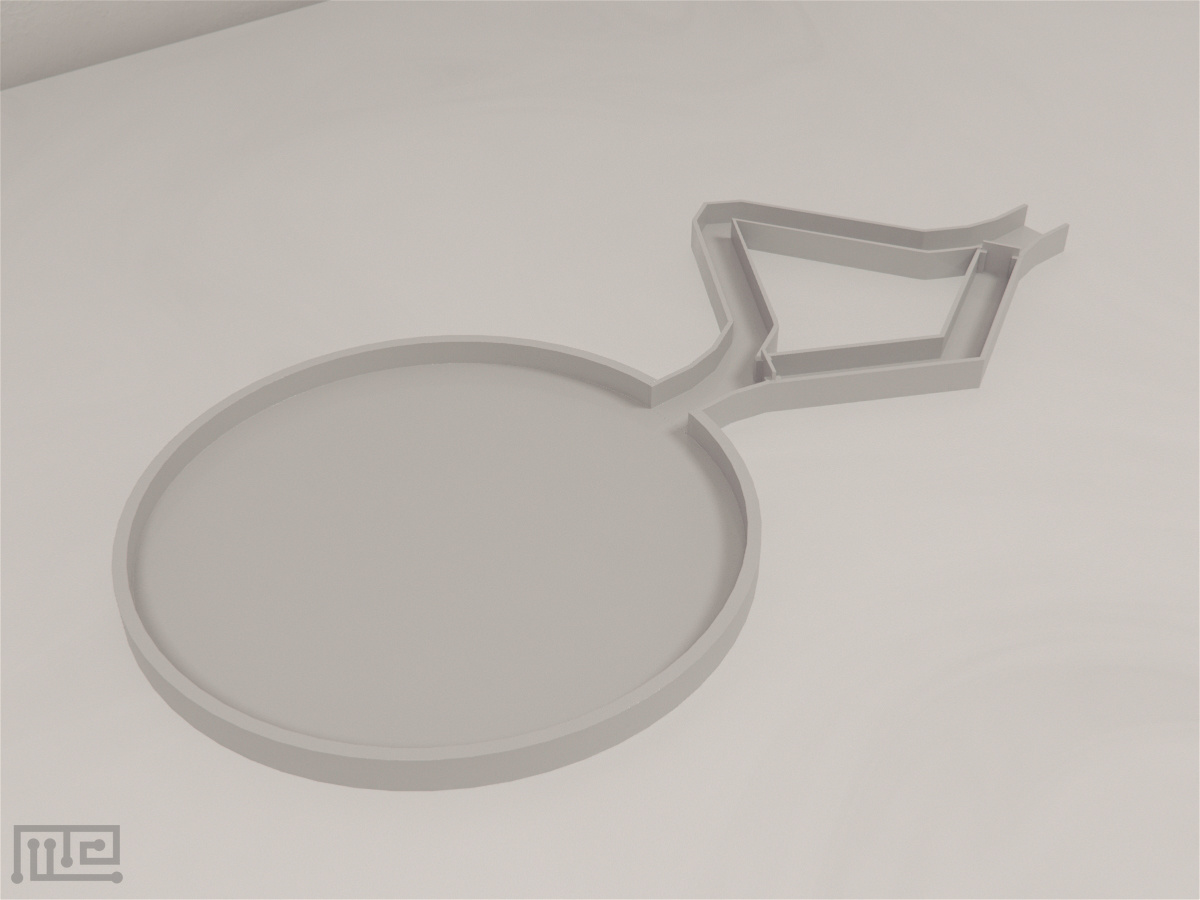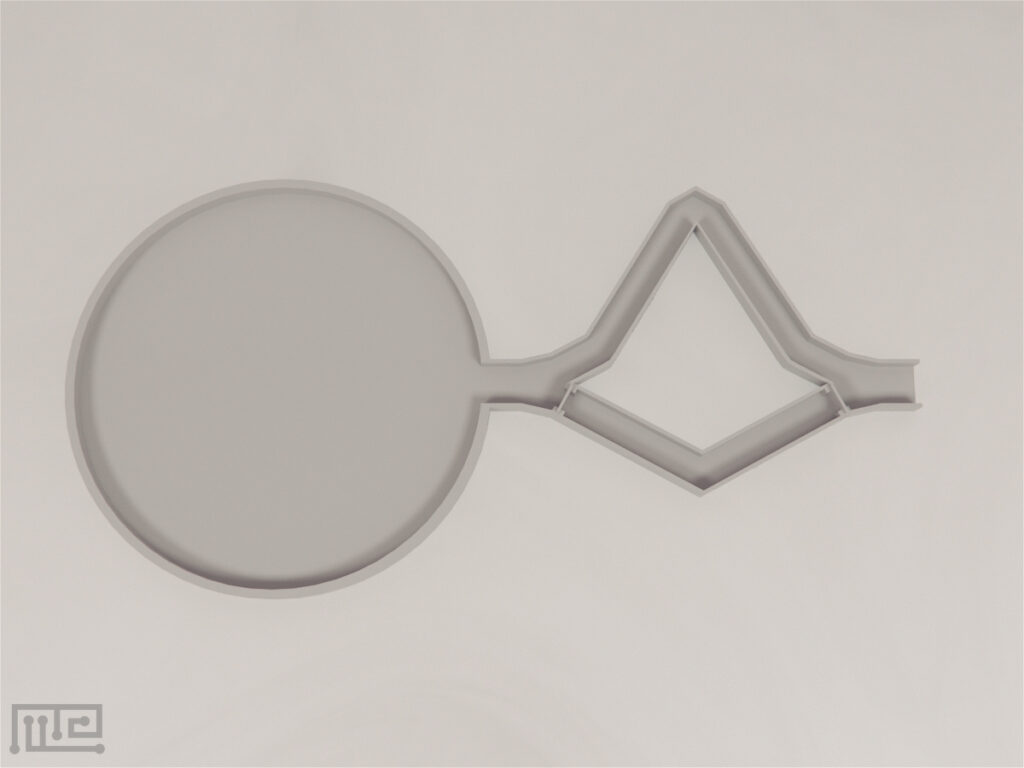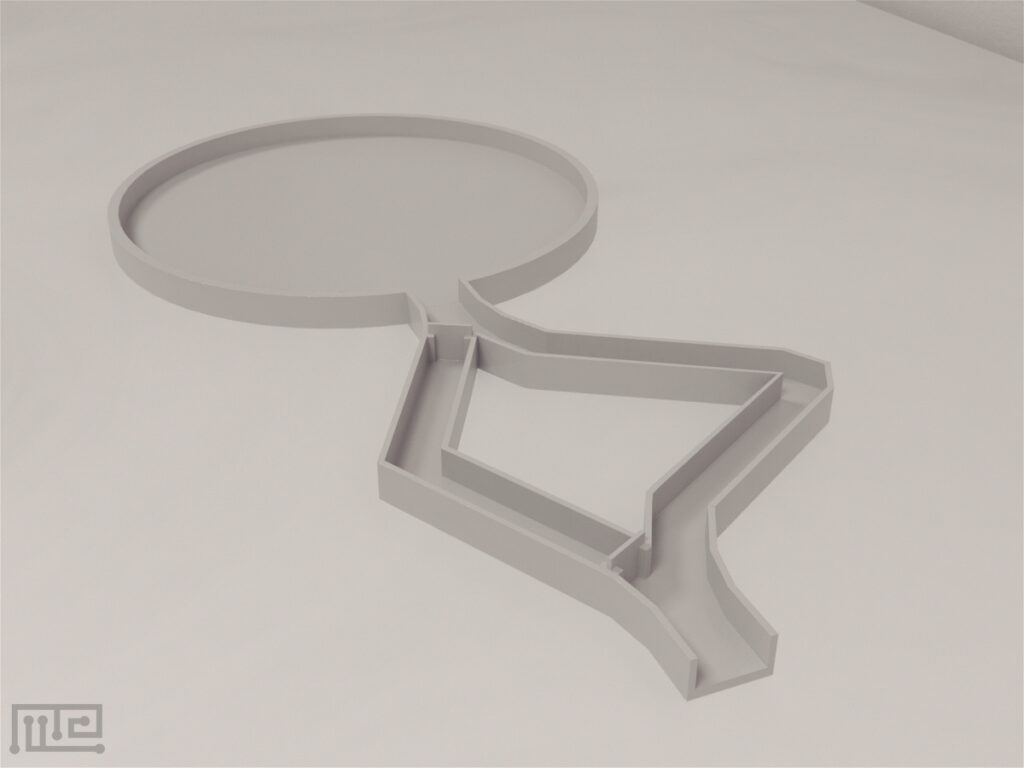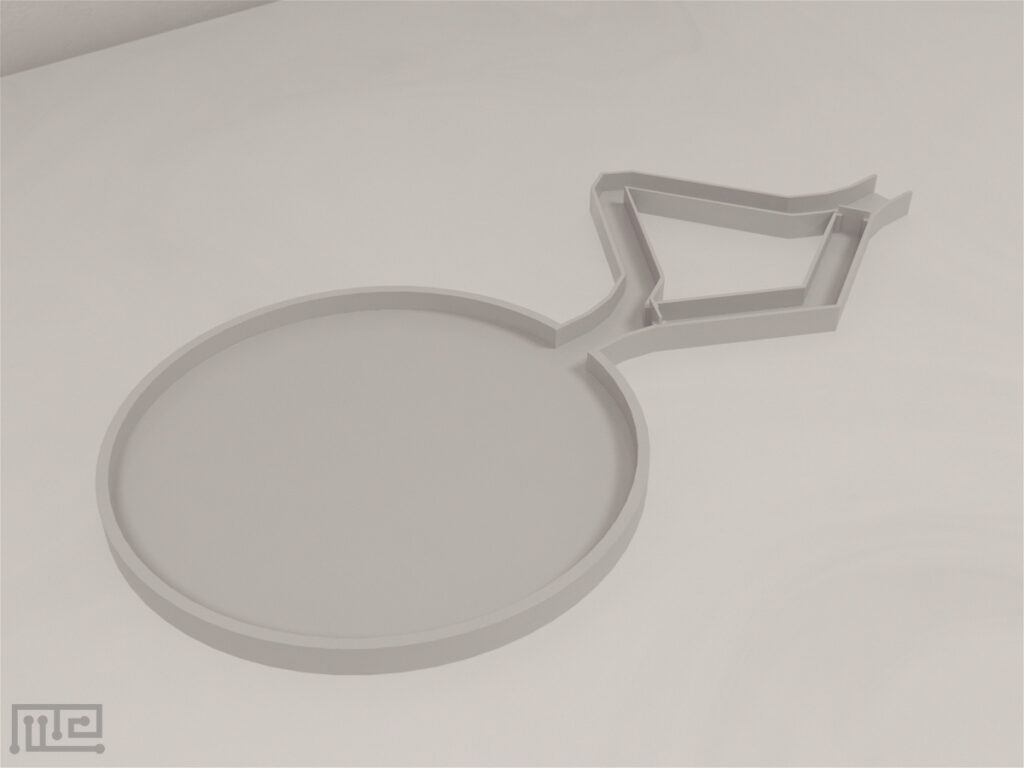The ant sucrose feeder 2 is used to evaluate the collective path preference of ants in terms of distance and food source.
The feeder consists of a diamond-shaped maze made of two V-shaped branches connected through the arms. The maze transports the ants from the nest to the sucrose feeder holding the food source. Each branch is placed at a 60-degree angle to the axis of the center to avoid any interference in the decision making of ants due to the disposition of the branches. A small section of 2 cm connects the long branch to the short branch at both ends. The maze links to the feeder and nest on opposite ends through a small 2 cm long bridge.
The apparatus tests the route memory of the subjects by providing two paths of different lengths leading to the same food source.
Mazeengineers offers the ant sucrose feeder 2.
Price & Dimensions
Ant sucrose feeder 2
$ 990
+S&H- Length of V-shaped branches: 8cm
- Angle of branches to the axis of the center:60o
- Length of link between branches: 2cm
- Length of link between maze and feeder: 2cm
Documentation
Introduction
The ant sucrose feeder is used to evaluate the collective path preference of ants in terms of distance and food source. The apparatus tests the route memory of the subjects by providing two paths of different lengths leading to the same food source. The ant sucrose feeder helps in understanding the impact of private and social information and the mechanisms behind the ants’ decision-making process. The ant sucrose feeder can be used for creating different treatment setups with memory and pheromones for testing ants.
Pheromone deposition on the substrate plays a vital role in collective decision making of ants. However, individual behaviors and private information may also affect collective decisions. Therefore, using private and social information together in making composite path choices and organizing ants, leads to more effective collective decisions (T. Czaczkes, J. Czaczkes, Iglhaut, & Heinze, 2015). The specific subject treatment and construction of ant sucrose feeder challenge the decision-making ability of ants in a composite environment.
The ant sucrose feeder consists of a diamond-shaped maze. The maze provides the subjects with two path choices while foraging for food. The choice points present near the entrance and exit of the maze act as a decision-making point for the subjects. The design allows the foragers to make respective path choices while moving towards the feeder or returning to the nest. Other apparatus used for assessing memory, learning, and decision making in ants are Ant Y Maze, Ant Double Bifurcation T, Ant T Maze and, Ant Binary Tree Maze.
Apparatus and Equipment
The ant sucrose feeder consists of a diamond-shaped maze made of two V-shaped branches connected through the arms. Each side of the V-shaped branch measures 8 cm in length. The maze transports the ants from the nest to the sucrose feeder holding the food source. Each branch is placed at a 60-degree angle to the axis of the center to avoid any interference in the decision making of ants due to the disposition of the branches. A small section of 2 cm connects the long branch to the short branch at both ends. The maze links to the feeder and nest on opposite ends through a small 2 cm long bridge.
Training Protocol
Keep the subjects deprived of food for 4 days prior to the test to increase their motivation for foraging. Clean the apparatus with ethanol to remove any traces of pheromones at the start and end of each trial. An external tracking and recording systems such as Noldus Ethovision XT can be used with the ant sucrose feeder for observing the ants’ behavior.
Testing Procedure
Place the diamond maze near the ant nest. Fill the feeder cavity with 0.5 M sucrose solution. Allow the ants to explore maze with only the longer path open for 15 minutes. After 15 minutes, open the shorter path and let the ants reach the food source using either path for 30 minutes.
Investigation of the effect of route memory on ant foraging behavior
Czaczkes, Salmane, Klampfleuthner, and Heinze (2016) analyzed the effects of route memory and pheromones on collective decisions of ants during foraging. The Lasius niger ants were divided into eight colonies. The collective path choices experiments were conducted using the ant sucrose feeder that provided the subjects with two separate paths leading towards the same food source (sucrose solution). The subjects differentiated between the short and long paths using their memory and pheromone trail. The ants were subjected to three treatments. The ‘pheromone removed’ treatment was created by cleaning all the apparatus with ethanol to eliminate previous pheromones’ trail. For ‘memory and pheromone remain’ treatment the apparatus was not cleaned, and the same subject group was tested. In order to create ‘memory removed’ treatment, a colony was first introduced to the maze and replaced with a naïve colony after some time to follow the left pheromone trail. Results revealed that in ‘memory removed’ and ‘memory and pheromone remain’ treatments high proportion of ants routed through the long section of the maze to the food source whereas lowest proportion was observed in ‘pheromone removed’ treatment.
Evaluation of route analysis behavior in ants based on memory and trailing
Goss, Aron, Deneubourg, and Pasteels, (1989) evaluated the path choices behavior in ants during foraging. The Argentine Iridomyrmex humilis ants were used as subjects. Two diamond shaped ant sucrose feeders were used in the experiment that provided a bi-dimensional path to the subjects leading to the food source. The ants’ foraging activity was recorded while moving towards the food source and coming back to the nest through the maze. Results revealed that initially equal number of ants were found in both arms of the maze. However, after a few minutes, as the trail developed, a higher number of ants preferred to use the shorter arm to reach the food source.
Data Analysis
Following parameters are observed when using ant sucrose feeders
- Number of ants at each feeder
- Number of ants returning back
- Number of ants switching feeder
Strengths and Limitations
Strengths
The ant sucrose feeder can be used for analyzing factors affecting foraging activity in ants. The apparatus can be used for creating different experimental setups by altering memory and pheromones conditions. The device is simple and produces reliable results. Minimum training is required before conducting the experiment. The device can be used for analyzing path choices made by the ants with respect to the length of path and quality of food source. The apparatus has many applications in studying the effect of route memory and pheromones concentration on the decision-making ability of ants.
Limitations
The ants must be kept under similar environmental conditions as maintained during rearing. Differences in specie, route memory, food source, and foraging technique can significantly impact task performance. Presence of olfactory cues or other disturbance cues can also interrupt ants’ foraging behavior; therefore, proper cleaning is important.
Summary
- The ant sucrose feeder can be used to study recruitment behavior, foraging activity, and memory acquisition in ants.
- The apparatus is also used in investigations analyzing the effect of social and private information on ants’ decision process.
- The diamond shape maze provides subjects with two different pathways leading to the same food source.
References.
- Czaczkes, T. J., Czaczkes, B., Iglhaut, C., & Heinze, J. (2015). Composite collective decision-making. Proceedings of the Royal Society B: Biological Sciences, 282. doi:10.1098/rspb.2014.2723
- Czaczkes, T. J., Salmane, A. K., Klampfleuthner, F. A., & Heinze, J. (2016). Private information alone can trigger trapping of ant colonies in local feeding optima. The Journal of Experimental Biology, 219(5), 744-51. doi:10.1242/jeb.131847
- Goss, S., Aron, S., Deneubourg, J.-L., & Pasteels, J. (1989). Self-organized Shortcuts in the Argentine Ant. Naturwissenschaften, 76(12), 579- 581. doi:10.1007/BF00462870




